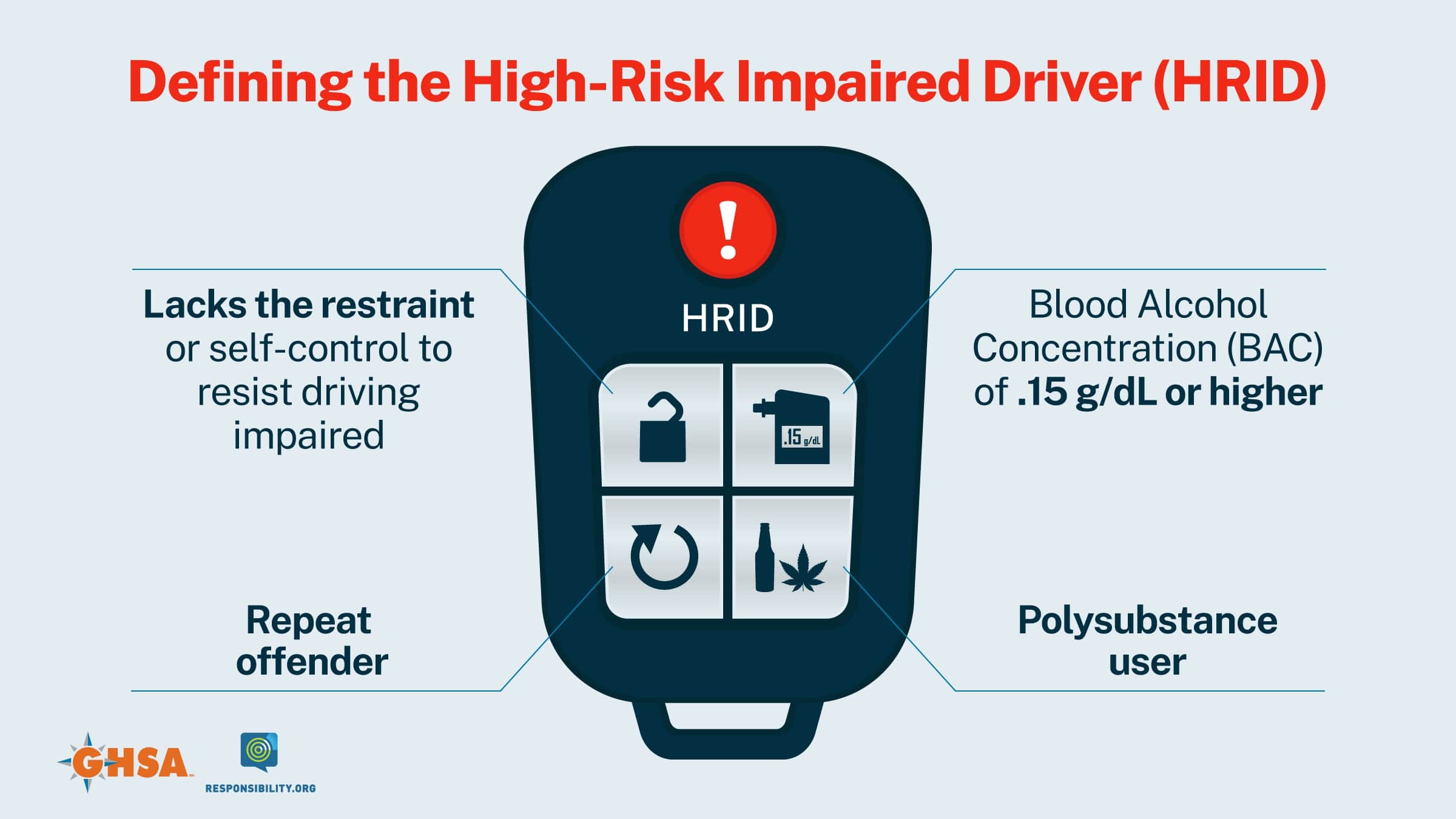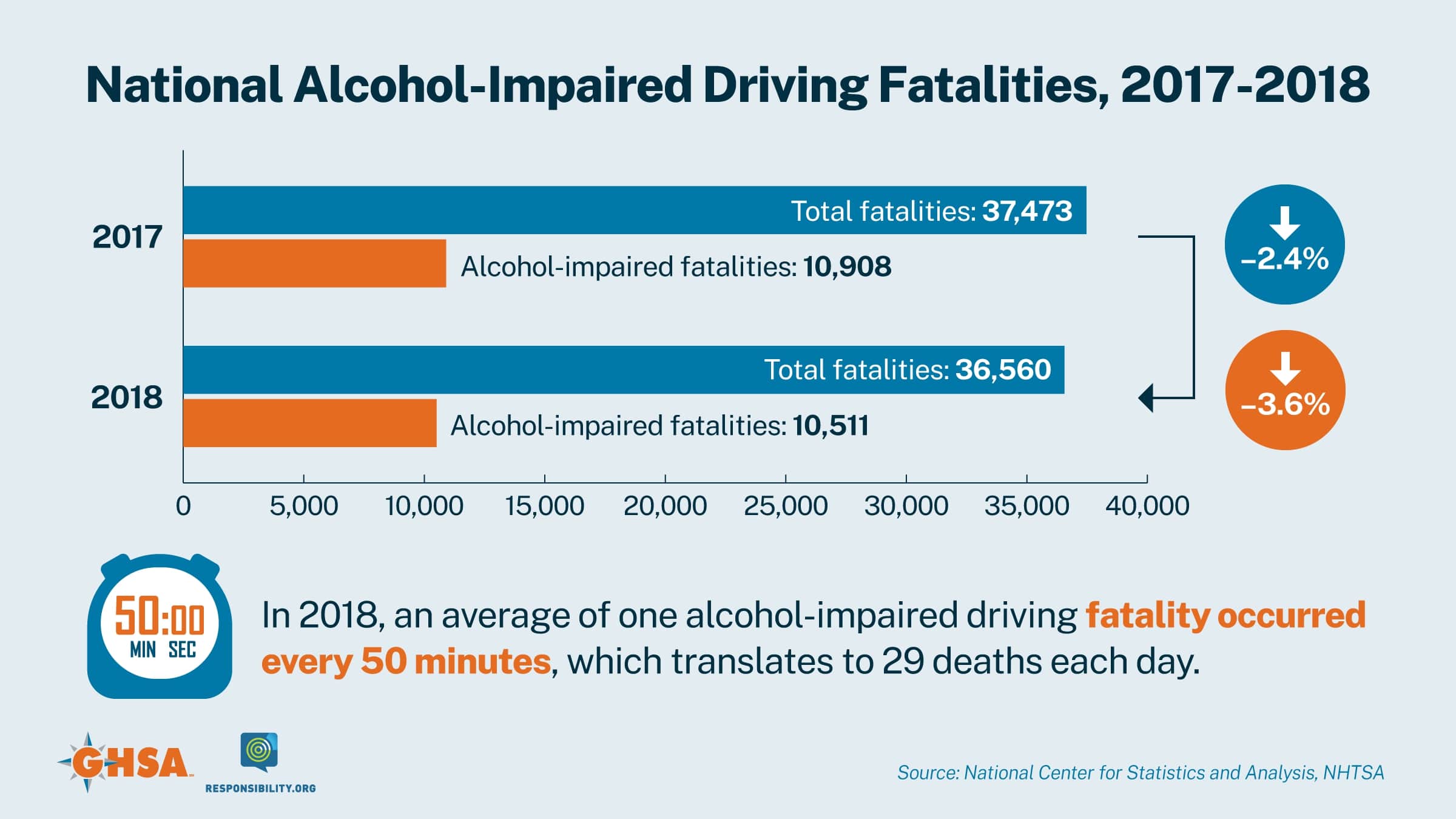
GHSA's report, High-Risk Impaired Drivers: Combating a Critical Threat, focuses on the challenges and opportunities associated with the high-risk impaired driver — a person who lacks the restraint or self-control to resist driving impaired.
A high-risk impaired driver is likely to drive with a BAC of .15g/dL or higher — or after consuming drugs or a combination of alcohol and drugs — and to do so repeatedly as evidenced by having more than one DUI arrest. Whatever the impairing substance, the high-risk impaired driver is highly resistant to changing his/her behavior despite sanctions, treatment or education and poses an elevated crash risk.
The report calls for a holistic approach to high-risk impaired drivers that focuses on the individual and the need to treat the underlying problem prompting the behavior. It makes recommendations on how SHSOs can help and provides several examples of promising approaches including DUI treatment courts, data sharing and e-warrants, toxicology labs and screening and assessments.
The report was researched and authored by Pam Shadel Fischer of Pam Fischer Consulting.
- Download "High-Risk Impaired Drivers: Combating a Critical Threat"
- News Release: New Report Calls for "Individualized Justice" Approach to Targeting High-Risk Impaired Drivers
Infographics Available for Download
JPEGs of the following infographics are available for download under "Resource Downloads" below. For higher-resolution image files, contact Adrian Nicholas at anicholas@ghsa.org.





